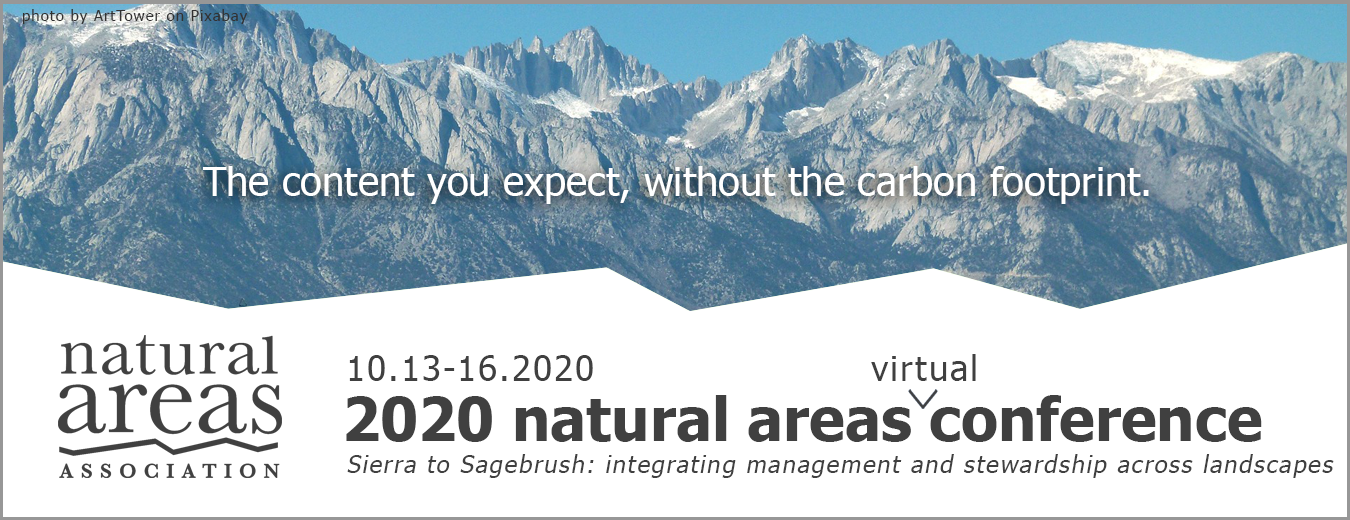
The 47th Natural Areas Conference, Sierra to Sagebrush: Integrating Management and Stewardship Across Landscapes, focused on the unique ecological and management dynamics that distinguish the Nevada-California borderlands.
Chief, Dept. of Agriculture's Forest Service
Shared Stewardship: Meeting Shared Challenges Across Shared Landscapes
Shared Stewardship is an initiative whose time has come. Launched in August 2018, Shared Stewardship builds on decades of cross-boundary work by the USDA Forest Service together with federal, state, Tribal, county, municipal, and private partners. As stewards of public, private, and Tribal lands, we face the same cross-boundary challenges at a landscape scale, including drought, catastrophic wildfires, invasive species, epidemics of forest pests and diseases, and more. We have signedor will soon signShared Stewardship agreements with states across the country, including California and Nevada, with their shared stewardship responsibilities for the Sierra Nevada and Great Basin. We work with the states and other partners to set broad priorities across shared landscapes for the outcomes we all want. Then we come to agreements with communities and stakeholders on the right tools to use at the right time in the right places at the right scale.
Author
Dam It: Partnering with Beavers to Achieve Restoration Goals
Although rarely mentioned as a primary cause of ecological degradation, the post-colonial fur trade inflicted profound damage upon North American landscapes through the extirpation of the beaver, a keystone species that dramatically modifies terrestrial and aquatic ecosystems. In the absence of beavers, millions of ponded acres dried up, hundreds of thousands of stream miles downcut and incised, and species across virtually all taxa lost critical habitat. Today, a growing coalition of beaver advocates centered in the American West, including members of both the scientific and livestock communities, are working to restore beavers to improve the condition of riparian areas. As ecosystem engineers and keystone species, beavers provide a broad range of benefits, including habitat restoration for salmonids, sage grouse, and amphibians; flood and drought control; the improvement of water quality and quantity; carbon sequestration; and wildfire mitigation. In this talk, Ben Goldfarb, author of the award-winning Eager: The Surprising, Secret Life of Beavers and Why They Matter, will discuss the history and environmental implications of the fur trade; detail the ecological and hydrological benefits that beavers provide; and discuss a range of techniques for restoring and coexisting with this vital but occasionally challenging species.
Director of the Southwest and South Central Climate Adaptation Science Centers
US Geological Survey, Tucson, AZ and Adjunct Professor of Geosciences and of Natural Resources and Environment at the University of Arizona
Ecological Transformation and Ecological Novelty: Past, Present, Future.
Ecological transformations and development of novel ecosystems pose big challenges to management and restoration of natural areas. The challenges are mushrooming with landscape-scale disturbances and widespread mortality of historically dominant plant species. Paleoecological records of terrestrial ecosystems indicate that ecological transformations related to climatic change have occurred routinely in ecological history, and these transformations often resulted in ecosystems with novel composition and properties. In fact, few terrestrial ecosystems have existed unchanged since the last glacial maximum 20,000 years ago, and most places have undergone multiple ecosystem transformations during the intervening period. Awareness of the extent and frequency of past ecological transformation provides valuable perspective for contemporary conservation and restoration, opening up a broader range of potential targets and outcomes, and preparing managers to anticipate fundamental, and often rapid, ecological transformation. Future ecological states may be difficult to predict, given the contingent nature of ecological outcomes; in a given setting, path-dependent ecological processes may deliver different ecological realizations difficult to predict in advance. Ecological managers and conservation practitioners will need to be alert to the potential for threshold dynamics, and to alternative future states. Effective management may require nimbleness, willingness to experiment, and emphasis on desirable outcomes that may differ substantially from current or historical states. Ultimately, in view of rapid environmental change and finite resources, managers will need to identify when to resist ecological change, when to accept it, and when and how to direct it toward desirable futures.
Area Fire Advisor, University of California Cooperative Extension
Director, Northern CA Prescribed Fire Council
The Fire Problem is a Cultural Problem
Over the last several decades, it has become clear that the West simultaneously suffers from too much fire and not enough. While western forests burn at unprecedented high severity and cities and towns are threatened, even more fire-dependent habitats, creatures, and cultures are withering from a lack of fire. The paradox of fire in the West runs deep, and reminds us that in many ways, our fire problem is a cultural problem. The last century of fire management was closed in many ways exclusive of indigenous and local knowledge, dismissive of women and other underrepresented groups, and hardened to new ways of thinking about and relating to fire. This presentation will highlight recent efforts in fire that are re-framing the fire problem as more of a fire opportunity to work together, to innovate, and to understand the natural role and responsibility that people have for restoring balance in fire.
 *All conference programming is subject to change.
*All conference programming is subject to change.Support the people who manage our natural areas and protect biodiversity in perpetuity.